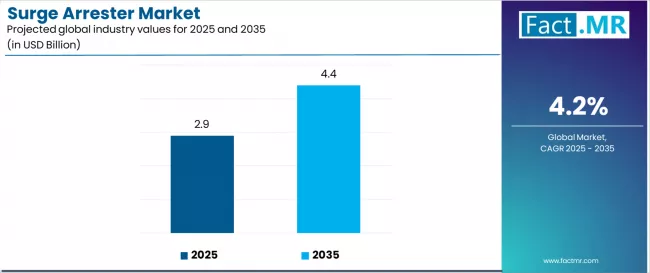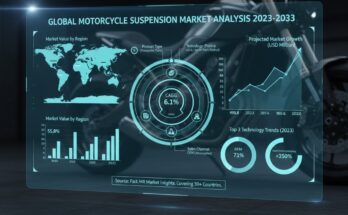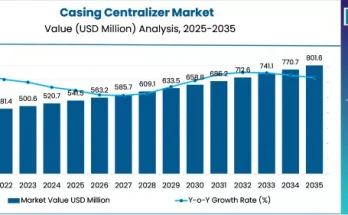In today’s electrified world, where industries, infrastructure, and homes rely on uninterrupted power supply, surge arresters play a vital role in protecting electrical systems from transient overvoltages. These protective devices ensure the safety and reliability of electrical networks by diverting excessive voltage away from critical equipment.
As global energy consumption continues to grow alongside the expansion of power grids, renewable energy integration, and industrial automation, the surge arrester market is witnessing a steady rise in demand. Their role has evolved from being simple protective components to essential elements in modern energy management systems, ensuring operational continuity and minimizing equipment downtime.
Market Overview
The surge arrester market focuses on the production and deployment of devices designed to protect electrical infrastructure against transient voltage spikes caused by lightning strikes, switching operations, or insulation failures. These arresters act as a safeguard for substations, transmission lines, transformers, and distribution networks, ensuring system reliability and safety.
Surge arresters are used across low, medium, and high-voltage applications, depending on their design and material composition. Modern designs incorporate advanced materials such as zinc oxide (ZnO) blocks, which offer superior nonlinear voltage-current characteristics, enabling efficient suppression of voltage surges without compromising the network’s normal operation.
With industries increasingly adopting digital monitoring and smart grid systems, surge arresters are evolving into intelligent devices equipped with condition monitoring sensors. These innovations allow real-time performance tracking, predictive maintenance, and improved asset management across power and utility networks.
Regional Insights
The demand for surge arresters is global, influenced by regional infrastructure growth, energy policies, and weather patterns:
- North America continues to lead due to widespread modernization of aging electrical grids, high lightning activity, and the rapid integration of renewable energy systems. Upgrades in power distribution infrastructure are creating consistent demand for reliable surge protection solutions.
- Europe follows closely, driven by stringent safety regulations and the adoption of advanced grid protection technologies. The region’s growing emphasis on sustainable power generation and smart grid implementation fuels demand for high-performance surge arresters.
- Asia Pacific is emerging as the most dynamic market, fueled by rapid urbanization, expanding industrial bases, and substantial investments in energy infrastructure. Countries such as China, India, and Japan are witnessing increased installations of surge arresters in power plants, substations, and industrial facilities.
- Middle East & Africa show promising growth, supported by ongoing infrastructure expansion and rising adoption of renewable energy projects where surge protection is crucial due to harsh environmental and lightning conditions.
The widespread adoption across these regions underscores how surge arresters are becoming indispensable in ensuring power stability and resilience against voltage disruptions.
Key Trends & Forecast
The surge arrester market is undergoing significant transformation, driven by technology, sustainability, and digital integration. Key trends shaping its evolution include:
- Smart Grid Integration: The expansion of smart grids has heightened the need for advanced surge protection systems capable of handling fluctuating loads and distributed energy sources.
- Monitoring and Diagnostics: Next-generation surge arresters feature built-in sensors and diagnostic capabilities, allowing operators to monitor arrester health and predict maintenance requirements.
- Renewable Energy Compatibility: With the global shift toward wind and solar energy, surge arresters are being specifically designed to protect sensitive renewable installations from voltage spikes caused by environmental factors or switching operations.
- Eco-Friendly Materials: Manufacturers are focusing on sustainable materials and production methods, ensuring compliance with environmental regulations while maintaining product durability and efficiency.
- Urban Electrification and Infrastructure Growth: Rapid urbanization, coupled with expanding smart city initiatives, is accelerating the deployment of surge protection devices in residential, commercial, and industrial applications.
These trends indicate that the market’s future will be defined by technological innovation, sustainability, and enhanced reliability standards.
Applications & End-Use Outlook
Surge arresters serve as critical protective components across multiple sectors, ensuring the stability and longevity of electrical infrastructure. Major applications include:
- Power Transmission and Distribution: Surge arresters protect high-voltage lines, transformers, and switchgear from transient voltage surges, ensuring reliable energy flow.
- Industrial and Manufacturing Facilities: Sensitive electrical and electronic systems in industrial plants depend on surge protection to prevent costly downtime or equipment failure.
- Renewable Energy Systems: Wind turbines, solar power plants, and other renewable installations require surge protection to safeguard against lightning strikes and voltage fluctuations.
- Residential and Commercial Buildings: Low-voltage surge arresters protect household electronics, HVAC systems, and commercial equipment from electrical transients.
- Transportation and Infrastructure: Railways, airports, and data centers are adopting surge protection solutions to maintain power quality and protect mission-critical systems.
The versatility and importance of surge arresters across these applications highlight their role as a foundational component of modern electrical safety.
Competitive Landscape
The surge arrester market features a competitive mix of global manufacturers and regional suppliers offering products across voltage categories and industry applications. Leading companies focus on innovation, material advancement, and strategic partnerships to strengthen their market presence.
Manufacturers are expanding product portfolios to include polymer-housed, metal-oxide, and hybrid surge arresters, each tailored to specific voltage and environmental requirements. Strategic collaborations with utilities and industrial customers are helping drive customized solutions that improve system protection and lifecycle management.
Additionally, the integration of smart technologies into surge arresters is redefining market competition, with companies investing in R&D to develop digitally enabled devices that align with the evolution of smart grids and IoT-driven maintenance systems.
Conclusion
Surge arresters are fundamental to ensuring the reliability and resilience of electrical networks in an era of growing electrification and renewable energy integration. As power systems become more complex and interconnected, the importance of reliable surge protection cannot be overstated.
The market’s trajectory is shaped by innovations in materials science, intelligent monitoring, and sustainability—all aimed at enhancing grid stability and equipment longevity. With the expansion of smart infrastructure and renewable power projects, surge arresters are set to play an even greater role in protecting vital assets and ensuring uninterrupted power delivery.
In a world increasingly reliant on electricity, surge arresters stand as silent guardians—safeguarding infrastructure, preventing failures, and enabling the safe flow of power that drives modern life and industry.
Browse Full Report – https://www.factmr.com/report/small-wind-market



